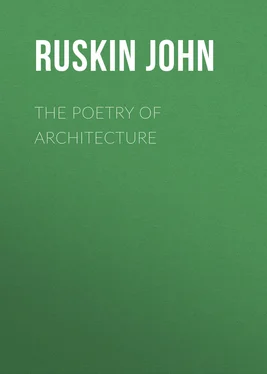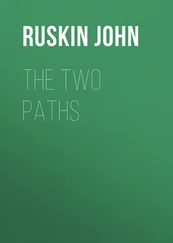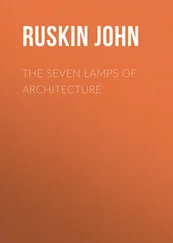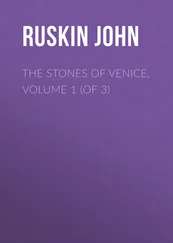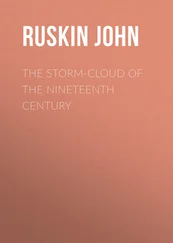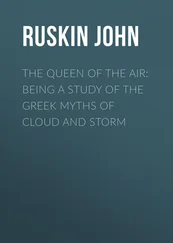John Ruskin - The Poetry of Architecture
Здесь есть возможность читать онлайн «John Ruskin - The Poetry of Architecture» — ознакомительный отрывок электронной книги совершенно бесплатно, а после прочтения отрывка купить полную версию. В некоторых случаях можно слушать аудио, скачать через торрент в формате fb2 и присутствует краткое содержание. Жанр: foreign_antique, foreign_home, literature_19, visual_arts, на английском языке. Описание произведения, (предисловие) а так же отзывы посетителей доступны на портале библиотеки ЛибКат.
- Название:The Poetry of Architecture
- Автор:
- Жанр:
- Год:неизвестен
- ISBN:нет данных
- Рейтинг книги:5 / 5. Голосов: 1
-
Избранное:Добавить в избранное
- Отзывы:
-
Ваша оценка:
- 100
- 1
- 2
- 3
- 4
- 5
The Poetry of Architecture: краткое содержание, описание и аннотация
Предлагаем к чтению аннотацию, описание, краткое содержание или предисловие (зависит от того, что написал сам автор книги «The Poetry of Architecture»). Если вы не нашли необходимую информацию о книге — напишите в комментариях, мы постараемся отыскать её.
The Poetry of Architecture — читать онлайн ознакомительный отрывок
Ниже представлен текст книги, разбитый по страницам. Система сохранения места последней прочитанной страницы, позволяет с удобством читать онлайн бесплатно книгу «The Poetry of Architecture», без необходимости каждый раз заново искать на чём Вы остановились. Поставьте закладку, и сможете в любой момент перейти на страницу, на которой закончили чтение.
Интервал:
Закладка:
29. The next point of interest is the window. The modern Italian is completely owl-like in his habits. All the daytime he lies idle and inert; but during the night he is all activity, but it is mere activity of inoccupation. Idleness, partly induced by the temperature of the climate, and partly consequent on the decaying prosperity of the nation, leaves indications of its influence on all his undertakings. He prefers patching up a ruin to building a house; he raises shops and hovels, the abodes of inactive, vegetating, brutish poverty, under the protection of aged and ruined, yet stalwart, arches of the Roman amphitheater; and the habitations of the lower orders frequently present traces of ornament and stability of material evidently belonging to the remains of a prouder edifice. This is the case sometimes to such a degree as, in another country, would be disagreeable from its impropriety; but, in Italy, it corresponds with the general prominence of the features of a past age, and is always beautiful. Thus, the eye rests with delight on the broken moldings of the windows, and the sculptured capitals of the corner columns, contrasted, as they are, the one with the glassless blackness within, the other with the ragged and dirty confusion of drapery around. The Italian window, in general, is a mere hole in the thick wall, always well proportioned; occasionally arched at the top, sometimes with the addition of a little rich ornament: seldom, if ever, having any casement or glass, but filled up with any bit of striped or colored cloth, which may have the slightest chance of deceiving the distant observer into the belief that it is a legitimate blind. This keeps off the sun, and allows a free circulation of air, which is the great object. When it is absent, the window becomes a mere black hole, having much the same relation to a glazed window that the hollow of a skull has to a bright eye; not unexpressive, but frowning and ghastly, and giving a disagreeable impression of utter emptiness and desolation within. Yet there is character in them: the black dots tell agreeably on the walls at a distance, and have no disagreeable sparkle to disturb the repose of surrounding scenery. Besides, the temperature renders everything agreeable to the eye, which gives it an idea of ventilation. A few roughly constructed balconies, projecting from detached windows, usually break the uniformity of the wall. In some Italian cottages there are wooden galleries, resembling those so frequently seen in Switzerland; but this is not a very general character, except in the mountain valleys of North Italy, although sometimes a passage is effected from one projecting portion of a house to another by means of an exterior gallery. These are very delightful objects; and when shaded by luxuriant vines, which is frequently the case, impart a gracefulness to the building otherwise unattainable.
30. The next striking point is the arcade at the base of the building. This is general in cities; and, although frequently wanting to the cottage, is present often enough to render it an important feature. In fact, the Italian cottage is usually found in groups. Isolated buildings are rare; and the arcade affords an agreeable, if not necessary, shade, in passing from one building to another. It is a still more unfailing feature of the Swiss city, where it is useful in deep snow. But the supports of the arches in Switzerland are generally square masses of wall, varying in size, separating the arches by irregular intervals, and sustained by broad and massy buttresses; while in Italy, the arches generally rest on legitimate columns, varying in height from one and a half to four diameters, with huge capitals, not unfrequently rich in detail. These give great gracefulness to the buildings in groups: they will be spoken of more at large when we are treating of arrangement and situation.
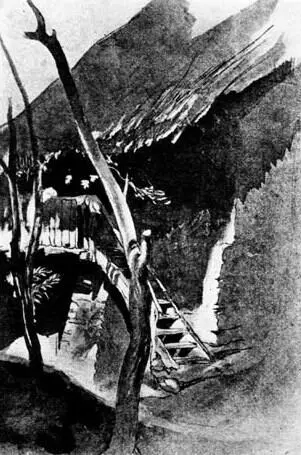
Italian Cottage Gallery, 1846.
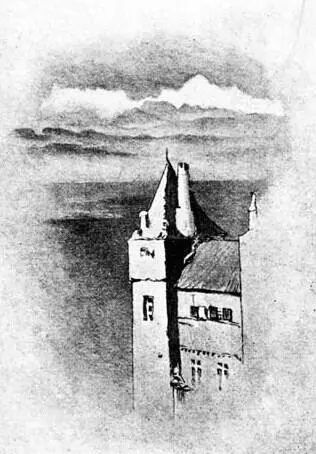
Chimney at Neuchatel; Dent du Midi and Mont Blanc in the distance.
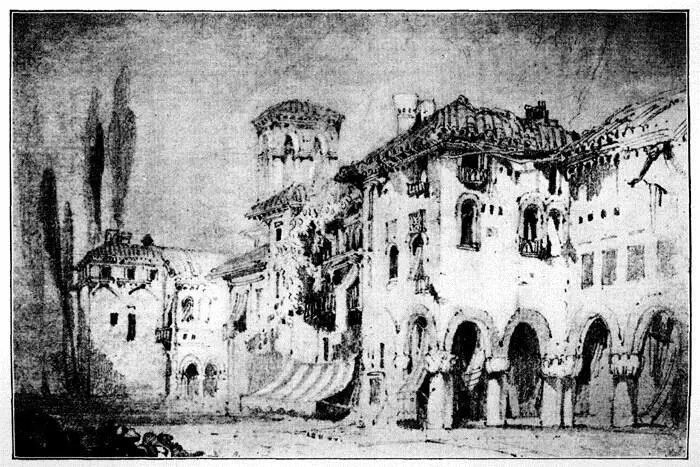
Cottage near la Cité, Val d'Aosta, 1838.
31. The square tower, rising over the roof of the farther cottage, will not escape observation. It has been allowed to remain, not because such elevated buildings ever belong to mere cottages, but, first, that the truth of the scene might not be destroyed; 3and, secondly, because it is impossible, or nearly so, to obtain a group of buildings of any sort, in Italy, without one or more such objects rising behind them, beautifully contributing to destroy the monotony, and contrast with the horizontal lines of the flat roofs and square walls. We think it right, therefore, to give the cottage the relief and contrast which, in reality, it possessed, even though we are at present speaking of it in the abstract.
32. Having now reviewed the distinctive parts of the Italian cottage in detail, we shall proceed to direct our attention to points of general character. I. Simplicity of form. The roof, being flat, allows of no projecting garret windows, no fantastic gable ends: the walls themselves are equally flat; no bow-windows or sculptured oriels, such as we meet with perpetually in Germany, France, or the Netherlands, vary their white fronts. Now, this simplicity is, perhaps, the principal attribute by which the Italian cottage attains the elevation of character we desired and expected. All that is fantastic in form, or frivolous in detail, annihilates the aristocratic air of a building: it at once destroys its sublimity and size, besides awakening, as is almost always the case, associations of a mean and low character. The moment we see a gable roof, we think of cock-lofts; the instant we observe a projecting window, of attics and tent-bedsteads. Now, the Italian cottage assumes, with the simplicity, l'air noble of buildings of a higher order; and, though it avoids all ridiculous miniature mimicry of the palace, it discards the humbler attributes of the cottage. The ornament it assumes is dignified; no grinning faces, or unmeaning notched planks, but well-proportioned arches, or tastefully sculptured columns. While there is nothing about it unsuited to the humility of its inhabitant, there is a general dignity in its air, which harmonizes beautifully with the nobility of the neighboring edifices, or the glory of the surrounding scenery.
33. II. Brightness of effect. There are no weather stains on the walls: there is no dampness in air or earth, by which they could be induced; the heat of the sun scorches away all lichens, and mosses and moldy vegetation. No thatch or stone crop on the roof unites the building with surrounding vegetation; all is clear, and warm, and sharp on the eye; the more distant the building, the more generally bright it becomes, till the distant village sparkles out of the orange copse, or the cypress grove, with so much distinctness as might be thought in some degree objectionable. But it must be remembered that the prevailing color of the Italian landscape is blue; sky, hills, water, are equally azure: the olive, which forms a great proportion of the vegetation, is not green, but gray; the cypress and its varieties, dark and neutral, and the laurel and myrtle far from bright. Now, white, which is intolerable with green, is agreeably contrasted with blue; and to this cause it must be ascribed that the white of the Italian building is not found startling and disagreeable in the landscape. That it is not, we believe, will be generally allowed.
Читать дальшеИнтервал:
Закладка:
Похожие книги на «The Poetry of Architecture»
Представляем Вашему вниманию похожие книги на «The Poetry of Architecture» списком для выбора. Мы отобрали схожую по названию и смыслу литературу в надежде предоставить читателям больше вариантов отыскать новые, интересные, ещё непрочитанные произведения.
Обсуждение, отзывы о книге «The Poetry of Architecture» и просто собственные мнения читателей. Оставьте ваши комментарии, напишите, что Вы думаете о произведении, его смысле или главных героях. Укажите что конкретно понравилось, а что нет, и почему Вы так считаете.
